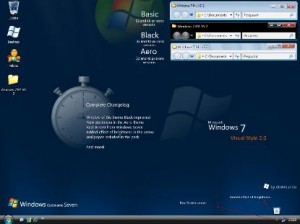 Windows 7 fans were rejoicing when Microsoft released a patch on Tuesday because their system was not affected in any way by the six security issues. The rejoicing was short-lived, however, as news has been released that there IS a bug that can crash a Windows 7 system. The bug has been named Zero-Day Exploit and was discovered by Laurent Gaffie.
Windows 7 fans were rejoicing when Microsoft released a patch on Tuesday because their system was not affected in any way by the six security issues. The rejoicing was short-lived, however, as news has been released that there IS a bug that can crash a Windows 7 system. The bug has been named Zero-Day Exploit and was discovered by Laurent Gaffie.
PC World provides further details:
The issue is in the SMB (Server Message Block) protocol that forms the backbone of Windows file sharing. When triggered, the flaw results in an infinite loop which renders the computer useless.
Tyler Reguly, Lead Security Research Engineer with nCircle, explains “Exploitation of this vulnerability occurs when a user attempts to browse to Windows Share hosted on the malicious server. On Windows 7, the DoS (denial of service) will occur as soon as you type ‘\\
\’ in the search box. ” The vulnerability actually impacts both Windows 7 and Windows Server 2008 R2.
While the threat is very much real, experts say that the chances of the bug being exploited are quite low:
There are currently a couple different proof-of-concept exploits circulating, but there are no reported attacks in the wild at this point. Because the flaw only enables an attacker to crash the system, and doesn’t provide any unauthorized remote access that could lead to compromising information or performing other malicious activities, the odds of the exploit being actively used by attackers is fairly slim.
So what are Windows 7 users supposed to do now? Currently, Microsoft has not yet released a patch to deal with the threat. I suppose the only sensible thing to do is to be more careful with regard to visiting web sites, especially if you are unsure of its legitimacy.
Photo courtesy of Megaleecher
